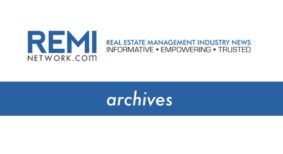In the big picture, big energy data is projected to simplify the process and expand the scope of audits, benchmarking, measurement and verification. On the ground — as a room full of energy analytics providers and users recently explored — there are still important details to work through.
The “big” in big data refers to its depth and/or breadth. Information can now be drawn from multiple meter readings collected at short, steady intervals, and this could potentially be gleaned from hundreds of properties within a portfolio; thousands to hundreds of thousands within a local distribution company’s (LDC) customer base; or millions in the Independent Electricity System Operator (IESO) of Ontario’s centralized meter data management and repository (MDM/R).
The challenges of standardizing inputs and outputs, addressing privacy concerns and building market awareness were up for discussion at a recent conference jointly sponsored by the IESO and the Advanced Energy Centre at Toronto’s MaRS Discovery District. Although commercial electricity customers tend to be more sophisticated than the residential sector about metering and electronic data applications, big data technology remains nascent with programs like Green Button in the pilot stage in Ontario.
“The benefits of big data, broadly categorized, are new insights and faster reaction,” observed Neal Bach, president of the consulting firm, Energy Profiles Limited, who joined other energy management specialists and LDC representatives in a panel discussion. “But the first thing, and the most important thing, is: this is about people. The people have to be aligned first.”
Looking back just a few years, keynote speaker Michael Brooks, chief executive officer of the Real Property Association of Canada (REALpac), outlined the real estate industry’s relatively recent awakening to what he termed “small to mid-size data”. REALpac’s now seemingly entrenched annual energy consumption survey and normalization methodology for benchmarking energy performance was launched just five years ago to target “20 by ’15” — an average annual energy-use intensity of 20 equivalent kilowatt-hours per square foot by 2015.
In keeping with Bach’s hypothesis, Brooks credits the numbers for tangibly illustrating where opportunities for savings exist, and the people for creatively responding to what the numbers reveal. Notably, the exercise of quantifying energy consumption attributable to plug load, which is largely within tenants’ control, spurred new and often unprecedented initiatives.
“That piece of the pie alone started a lot of people thinking about tenant engagement programs,” he said. “In the overall scheme, there are two hugely motivational pieces. We’re asking two transformative questions: How do my numbers relate to others on an apples-to-apples basis? And what is my appropriate target?”
Ian Jarvis, president of Enerlife Consulting, recounted the similar experience of the city of Toronto’s energy conservation and demand management program, which used utility billing information to create a picture of a large and diverse municipally owned building portfolio.
“The data came up with all kinds of surprising facts that drive strategy,” he said. “Everybody has a role to play once you have the target, and that’s constantly being reinforced by data coming back from the field.”
Turning to truly big data, Joe Bilé, manager of conservation and demand management (CDM) program delivery with Toronto Hydro, gave an overview of the LDC’s remote energy auditing pilot project in partnership with the energy analytics firm, FirstFuel. Twenty buildings, each with an average area of 400,000 square feet, were assessed algorithmically based on approximately 35,000 points of data from meter readings at 15-minute intervals.
“I call it: energy manager in a can,” he quipped. “That’s 3,000 times more information than what we traditionally get. We’re able to do a lot with that.”
For a manager tasked with reaching out to 81,000 non-residential customers, Bilé heralded the timeliness and cost-effectiveness of the approach, which identified potential energy savings of 15 per cent in the pilot project. While still endorsing the traditional more labour-intensive approach to audits, he suggested the remote method could also be a tool to guide best deployment of Toronto Hydro’s team of in-house roving energy managers, who consult with businesses and multi-residential landlords.
“There is room in the marketplace for this kind of approach,” Bilé said.
Meanwhile, his fellow panellist, Stephen Sottile, manager of conservation with Utilities Kingston, deals with a much different, predominantly residential customer base. In that scenario, the algorithms need a front team.
“The data means nothing unless you can explain what it means to the consumer,” Sottile asserted. “Every single conservation program we run that is operating with better performance than the provincial average features one-on-one with someone from the utility.”
This strategy supports a pilot project in partnership with smart meter data analytics provider, Ecotagious, in which 9,000 residential customers now receive personalized reports about their consumption patterns and opportunities for saving. The utility has specifically targeted customers with electric space heating and/or higher than average electricity bills.
“People can see how they are doing over a whole heating season and they get feedback,” Sottile said. “If you don’t have the customer support ready to answer the phone when the data goes out, you are going to get angry customers. The angry customers that have called in, we turned them into happy customers because we’ve been able to talk to them.”
For the wider Kingston community, the MyUtilities portal provides customers with access to their own consumption profile and neighbourhood benchmarks. Elsewhere in Ontario, London Hydro is helping to pilot Green Button’s Connect My Data option, which, with the customer’s consent, securely delivers utility data to third-party analysts.
“I think we need to learn from other industries,” reflected panellist Syed Mir, vice president, corporate services, and chief information officer with London Hydro. “We have to look at cloud computing. It has to be mobile, first. And we need standards to avoid things that don’t talk to each other.”
That’s a goal Neal Bach affirmed as he noted his own much more frequent experience of receiving data in varying formats from many different sources. “What’s it going to take to get all utilities in North America to implement this in the same way?” he asked.
In Ontario, the IESO is now contemplating that question and will be launching a stakeholder consultation process. “The data in the MDM/R offers significant development opportunities,” acknowledged Julia McNally, the IESO’s director of strategic engagement and innovation. “IESO is committed to further enhancing the value of this data set.”
Barbara Carss is editor-in-chief of Building Strategies & Sustainability and Canadian Property Management






